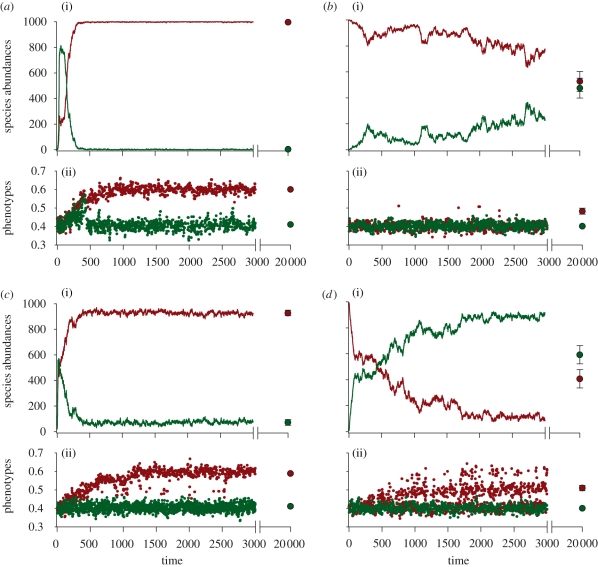Figure 3.
A species that monopolizes a new patch through adaptation can become a victim of its own success when dispersal is high. We assume two evolving species with similar adaptabilities. At low dispersal (m = 0.01), two evolving species inhabiting two similar environments (e = 0.4) colonize a new environment (e = 0.6) at the same time. We depict the species abundances and phenotypes of both species in the new patch (first column) and in the original patch of species 1 (second column). Filled circles indicate the mean abundances and phenotypic values (±1 s.e.) for 40 simulations after 20 000 time steps. (a(i)(ii)) By chance, species 1 (red) adapts faster than species 2 (green) and comes to dominate the new patch. (b(i)(ii)) Species 1 remains adapted to its original source patch for a transitory period until its abundance equilibrates with that of species 2. (c(i)(ii)) Species 1 again wins the new patch by chance, adapts to the new conditions and dominates the patch. However, higher dispersal (m = 0.10) increases the maladaptive gene flow from the new habitat (c(i)(ii)) to the original source habitat of species 1. As a consequence, the original source population of species 1 becomes increasingly maladapted (d(i)(ii)) and declines in abundance substantially relative to species 2. This effect remains after 20 000 time steps. For results at time = 20 000, the symbol frequently hides the small error bars.

